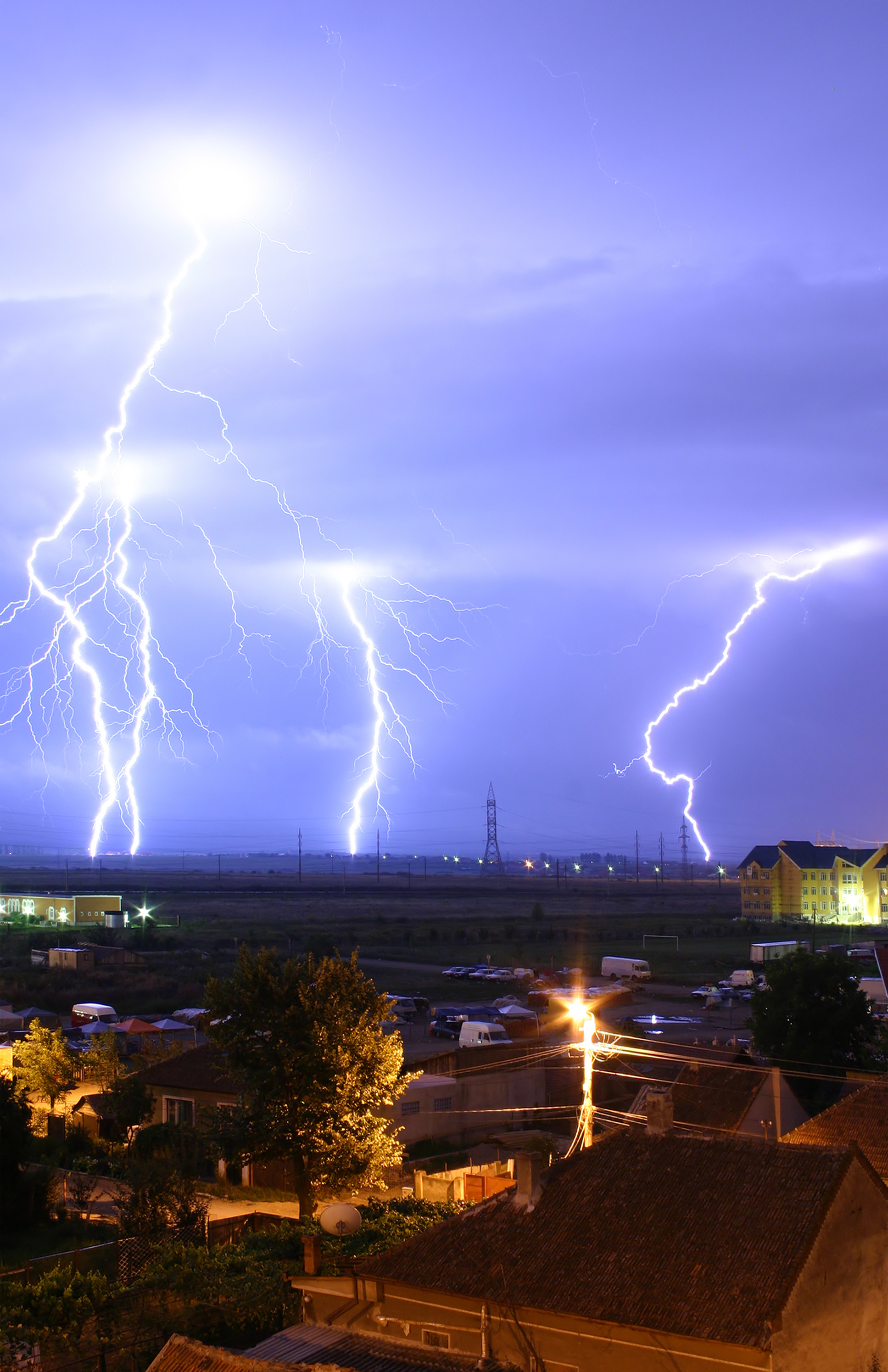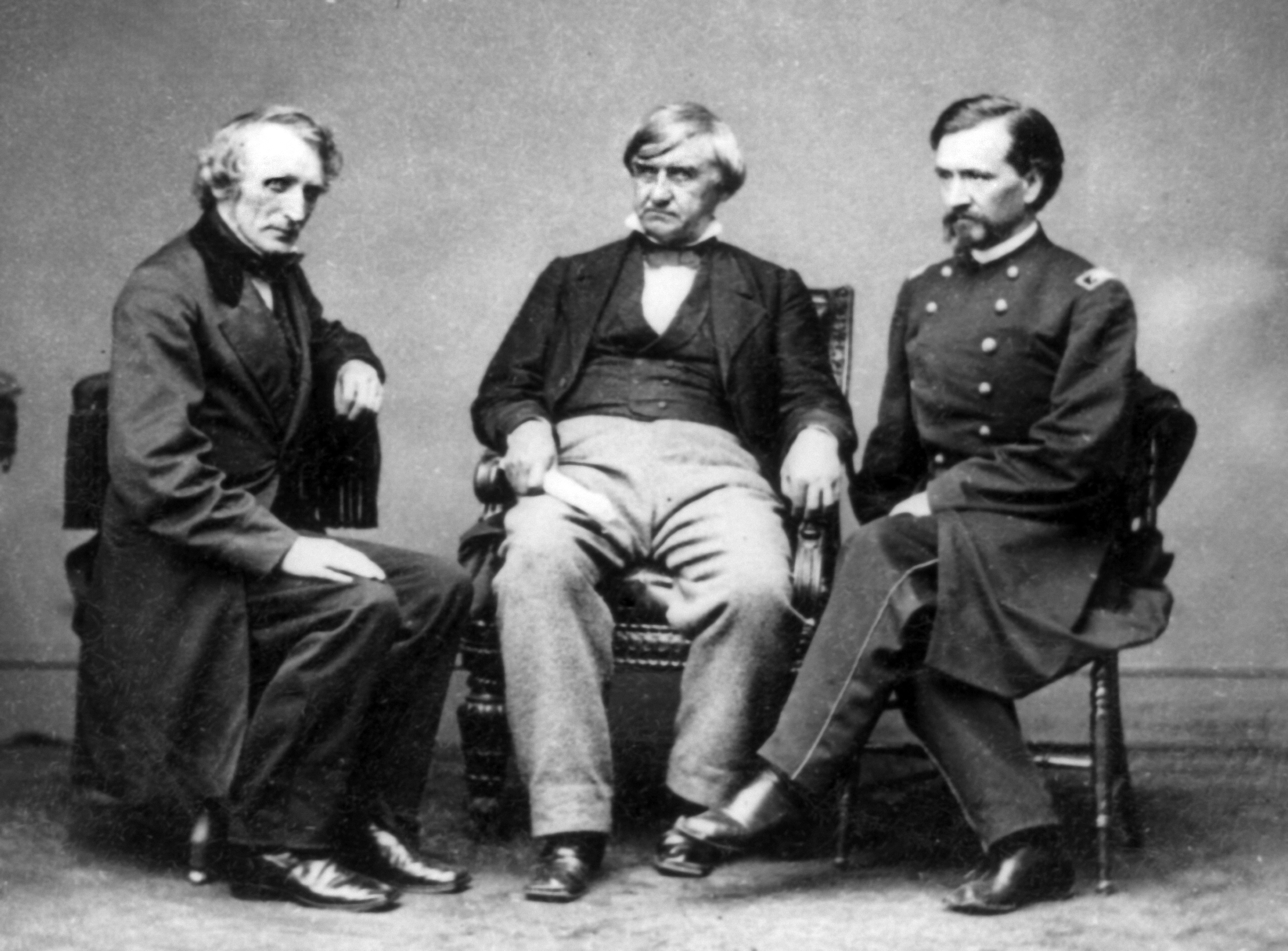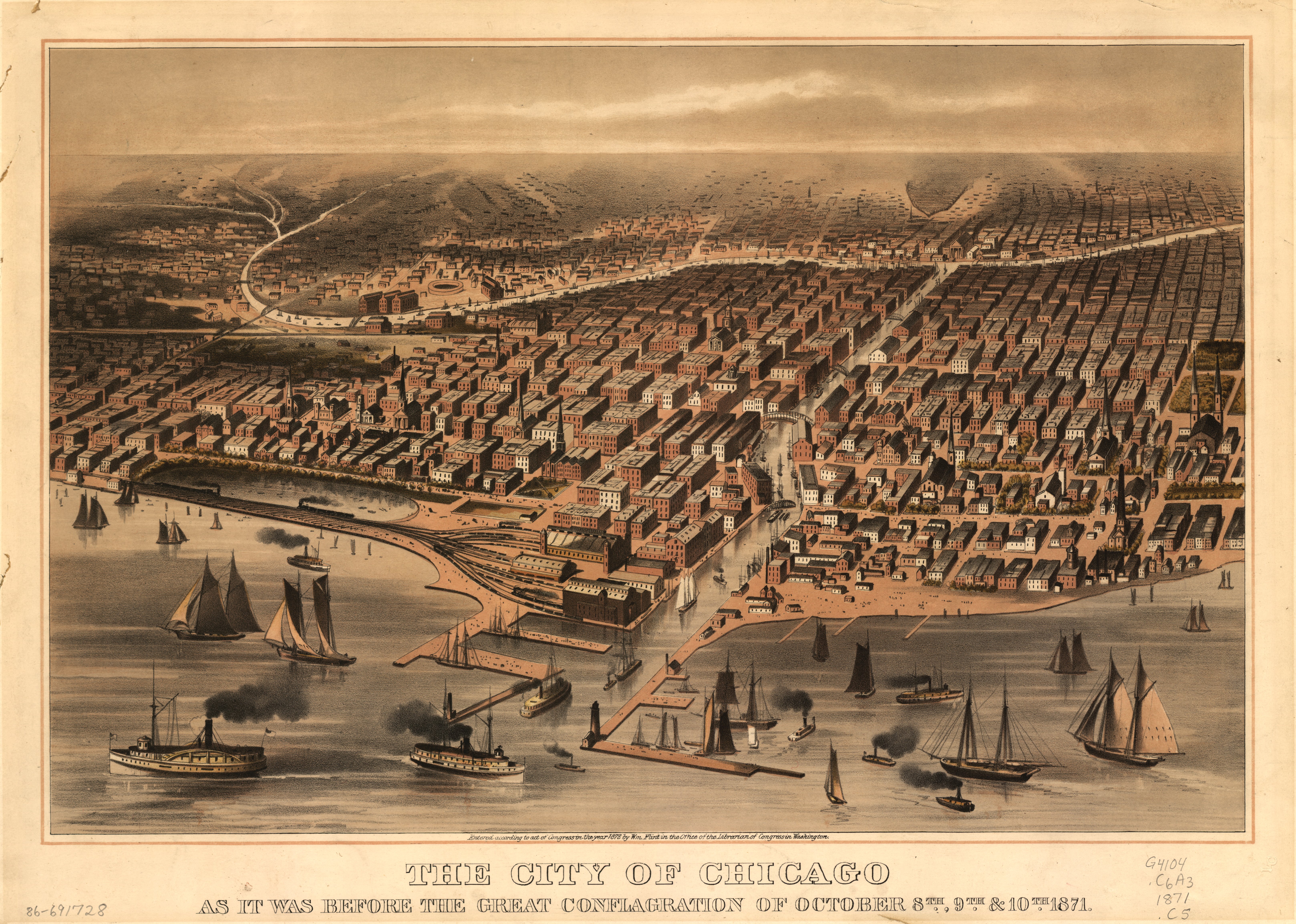|
Mahlon Loomis
Mahlon Loomis (21 July 1826 – 13 October 1886) was an American dentist and inventor known for proposing a wireless communication and electric power generating system based on his idea that there were electrically charged layers in the earth's atmosphere. Loomis' theory was that the Earth's upper atmosphere was divided into discrete voltage layers, rising from zero at ground level to higher voltage with altitude, and that these could be "tapped" using kites fitted with metallic screen conductors and 600 foot long copper cords, flown high above hills and mountains, in order to conduct electricity for use on the ground or to transmit and receive electromagnetic code impulse messages. He claimed that in 1868, he sent wireless telegraphic transmissions between two Virginia hilltops 18 miles apart using apparatus based on his theories. Historians' takes on what he actually did range from his claim being unproven to theories that he may have inadvertently sent electromagnetic wave (r ... [...More Info...] [...Related Items...] OR: [Wikipedia] [Google] [Baidu] |
Oppenheim, New York
Oppenheim is a town in Fulton County, New York, United States. The town is in the southwestern corner of the county and is east of Utica. The population was 1,924 at the 2010 census. History The town was first settled ''circa'' 1791 by Palatine Germans from Oppenheim, Germany. The town of Oppenheim was established in 1808 from the town of Palatine in Montgomery County, before the formation of Fulton County. In the 1810 U.S. Federal Census, the name of the town was spelled, "Upenheim." When Fulton County was formed in 1838, the south part of Oppenheim was used to form the town of St. Johnsville, which remained in Montgomery County. The early occupations of townspeople were associated with dairy and cheese-making activities. Beaversprite, a nature refuge, was founded in Oppenheim in the 1930s. Geography According to the United States Census Bureau, the town has a total area of , of which is land and , or 0.54%, is water. The northern part of the town is in the Adirondac ... [...More Info...] [...Related Items...] OR: [Wikipedia] [Google] [Baidu] |
Loomis Aerial Telegraphy Drawing
Loomis may refer to: Places Canada *Loomis, Saskatchewan United States *Loomis, California *Loomis, Michigan * Loomis, Nebraska *Loomis, New York, a hamlet in Liberty, New York *Loomis, South Dakota *Loomis, Washington * Loomis, Wisconsin *Loomis Chaffee, a school in Windsor, Connecticut, originally known as The Loomis Institute * Loomis Museum, an historical homestead museum in California *Loomis station, a former train station and mansion in Washington *Loomis station (CTA Englewood branch), a former Chicago 'L' train station Structures * Loomis Homestead, Windsor, Connecticut *Capt. James Loomis House, Windsor, Connecticut * Loomis-Parry Residence, Augusta, Kansas *Fowler-Loomis House, Oswego County, New York *Robert and Mabel Loomis House, Hood River, Oregon People * See Loomis (surname) Television and film The surname Loomis has become something of a trope in horror films, with characters in the Psycho, Halloween, Scream and Dark Shadows films or franchises carrying the na ... [...More Info...] [...Related Items...] OR: [Wikipedia] [Google] [Baidu] |
Schematic
A schematic, or schematic diagram, is a designed representation of the elements of a system using abstract, graphic symbols rather than realistic pictures. A schematic usually omits all details that are not relevant to the key information the schematic is intended to convey, and may include oversimplified elements in order to make this essential meaning easier to grasp, as well as additional organization of the information. For example, a subway map intended for passengers may represent a subway station with a dot. The dot is not intended to resemble the actual station at all but aims to give the viewer information without unnecessary visual clutter. A schematic diagram of a chemical process uses symbols in place of detailed representations of the vessels, piping, valves, pumps, and other equipment that compose the system, thus emphasizing the functions of the individual elements and the interconnections among them and suppresses their physical details. In an electronic circuit d ... [...More Info...] [...Related Items...] OR: [Wikipedia] [Google] [Baidu] |
Atmospheric Electricity
Atmospheric electricity is the study of electrical charges in the Earth's atmosphere (or that of another planet). The movement of charge between the Earth's surface, the atmosphere, and the ionosphere is known as the global atmospheric electrical circuit. Atmospheric electricity is an interdisciplinary topic with a long history, involving concepts from electrostatics, atmospheric physics, meteorology and Earth science. Thunderstorms act as a giant battery in the atmosphere, charging up the electrosphere to about 400,000 volts with respect to the surface. This sets up an electric field throughout the atmosphere, which decreases with increase in altitude. Atmospheric ions created by cosmic rays and natural radioactivity move in the electric field, so a very small current flows through the atmosphere, even away from thunderstorms. Near the surface of the Earth, the magnitude of the field is on average around 100 V/m. Atmospheric electricity involves both thunderstorms, which crea ... [...More Info...] [...Related Items...] OR: [Wikipedia] [Google] [Baidu] |
John Bingham
John Armor Bingham (January 21, 1815 – March 19, 1900) was an American politician who served as a Republican representative from Ohio and as the United States ambassador to Japan. In his time as a congressman, Bingham served as both assistant Judge Advocate General in the trial of the Abraham Lincoln assassination and a House manager ( prosecutor) in the impeachment trial of U.S. President Andrew Johnson. He was also the principal framer of the Fourteenth Amendment to the United States Constitution. Early life and education Born in Mercer County, Pennsylvania, where his carpenter and bricklayer father Hugh had moved after service in the War of 1812, Bingham attended local public schools. After his mother's death in 1827, his father remarried. John moved west to Ohio to live with his merchant uncle Thomas after clashing with his new stepmother. He apprenticed as a printer for two years, helping to publish the ''Luminary'', an anti-Masonic newspaper. He then returned to P ... [...More Info...] [...Related Items...] OR: [Wikipedia] [Google] [Baidu] |
Samuel Clarke Pomeroy
Samuel Clarke Pomeroy (January 3, 1816 – August 27, 1891) was a United States senator from Kansas in the mid-19th century. He served in the United States Senate during the American Civil War. Pomeroy also served in the Massachusetts House of Representatives. A Republican, he also was the mayor of Atchison, Kansas, from 1858 to 1859, the second president of the Atchison, Topeka and Santa Fe Railroad, and the first president to oversee any of the railroad's construction and operations. Pomeroy succeeded Cyrus K. Holliday as president of the railroad on January 13, 1864. Career Early life Samuel C. Pomeroy was born on January 3, 1816, at Southampton, Massachusetts. He attended Amherst College. Pomeroy opposed the politics of slavery, and in 1854 he became an affiliate of the New England Emigrant Aid Company. That fall, he led a group of settlers to Kansas to help found the city of Lawrence. 1860s On April 4, 1861, the Kansas legislature elected Pomeroy (along with James L ... [...More Info...] [...Related Items...] OR: [Wikipedia] [Google] [Baidu] |
Charles Wheatstone
Sir Charles Wheatstone FRS FRSE DCL LLD (6 February 1802 – 19 October 1875), was an English scientist and inventor of many scientific breakthroughs of the Victorian era, including the English concertina, the stereoscope (a device for displaying three-dimensional images), and the Playfair cipher (an encryption technique). However, Wheatstone is best known for his contributions in the development of the Wheatstone bridge, originally invented by Samuel Hunter Christie, which is used to measure an unknown electrical resistance, and as a major figure in the development of telegraphy. Life Charles Wheatstone was born in Barnwood, Gloucestershire. His father, W. Wheatstone, was a music-seller in the town, who moved to 128 Pall Mall, London, four years later, becoming a teacher of the flute. Charles, the second son, went to a village school, near Gloucester, and afterwards to several institutions in London. One of them was in Kennington, and kept by a Mrs. Castlemaine, who ... [...More Info...] [...Related Items...] OR: [Wikipedia] [Google] [Baidu] |
Samuel Morse
Samuel Finley Breese Morse (April 27, 1791 – April 2, 1872) was an American inventor and painter. After having established his reputation as a portrait painter, in his middle age Morse contributed to the invention of a single-wire telegraph system based on European telegraphs. He was a co-developer of Morse code and helped to develop the commercial use of telegraphy. Personal life Samuel F. B. Morse was born in Charlestown, Massachusetts, the first child of the pastor Jedidiah Morse (1761–1826), who was also a geographer, and his wife Elizabeth Ann Finley Breese (1766–1828). His father was a great preacher of the Calvinist faith and supporter of the Federalist Party. He thought it helped preserve Puritan traditions (strict observance of Sabbath, among other things), and believed in the Federalist support of an alliance with Britain and a strong central government. Morse strongly believed in education within a Federalist framework, alongside the instillation of Calvin ... [...More Info...] [...Related Items...] OR: [Wikipedia] [Google] [Baidu] |
Charles Sumner
Charles Sumner (January 6, 1811March 11, 1874) was an American statesman and United States Senator from Massachusetts. As an academic lawyer and a powerful orator, Sumner was the leader of the anti-slavery forces in the state and a leader of the Radical Republicans in the U.S. Senate during the American Civil War. During Reconstruction, he fought to minimize the power of the ex-Confederates and guarantee equal rights to the freedmen. He fell into a dispute with President Ulysses Grant, a fellow Republican, over the control of Santo Domingo, leading to the stripping of his power in the Senate and his subsequent effort to defeat Grant's re-election. Sumner changed his political party several times as anti-slavery coalitions rose and fell in the 1830s and 1840s before coalescing in the 1850s as the Republican Party, the affiliation with which he became best known. He devoted his enormous energies to the destruction of what Republicans called the Slave Power, that is, to the endin ... [...More Info...] [...Related Items...] OR: [Wikipedia] [Google] [Baidu] |
Chesapeake Bay
The Chesapeake Bay ( ) is the largest estuary in the United States. The Bay is located in the Mid-Atlantic (United States), Mid-Atlantic region and is primarily separated from the Atlantic Ocean by the Delmarva Peninsula (including the parts: the Eastern Shore of Maryland / Eastern Shore of Virginia and the state of Delaware) with its mouth of the Bay at the south end located between Cape Henry and Cape Charles (headland), Cape Charles. With its northern portion in Maryland and the southern part in Virginia, the Chesapeake Bay is a very important feature for the ecology and economy of those two states, as well as others surrounding within its watershed. More than 150 major rivers and streams flow into the Bay's drainage basin, which covers parts of six states (New York, Pennsylvania, Delaware, Maryland, Virginia and West Virginia) and all of District of Columbia. The Bay is approximately long from its northern headwaters in the Susquehanna River to its outlet in the Atlantic Ocea ... [...More Info...] [...Related Items...] OR: [Wikipedia] [Google] [Baidu] |
Great Chicago Fire
The Great Chicago Fire was a conflagration that burned in the American city of Chicago during October 8–10, 1871. The fire killed approximately 300 people, destroyed roughly of the city including over 17,000 structures, and left more than 100,000 residents homeless. The fire began in a neighborhood southwest of the city center. A long period of hot, dry, windy conditions, and the wooden construction prevalent in the city, led to the conflagration. The fire leapt the south branch of the Chicago River and destroyed much of central Chicago and then leapt the main branch of the river, consuming the Near North Side. Help flowed to the city from near and far after the fire. The city government improved building codes to stop the rapid spread of future fires and rebuilt rapidly to those higher standards. A donation from the United Kingdom spurred the establishment of the Chicago Public Library. Origin The fire is claimed to have started at about 8:30 p.m. on October ... [...More Info...] [...Related Items...] OR: [Wikipedia] [Google] [Baidu] |
Black Friday (1869)
The Black Friday gold panic of September 24, 1869 was caused by a conspiracy between two investors, Jay Gould and his partner James Fisk, and Abel Corbin, a small time speculator who had married Virginia (Jennie) Grant, the younger sister of President Ulysses Grant. They formed the ''Gold Ring'' to corner the gold market and force up the price of metal on the New York Gold Exchange. The scandal took place during the Presidency of Ulysses S. Grant, whose policy was to sell Treasury gold at weekly intervals to pay off the national debt, stabilize the dollar, and boost the economy. The country had gone through tremendous upheaval during the Civil War and was not yet fully restored. Gould and Fisk hoped to take advantage of Corbin's relationship with his brother-in-law—the president—and Gould persuaded Corbin to introduce him to Grant. Gould and Fisk hoped that befriending the President would get them privy information about the government's gold policy—and even prevent the ... [...More Info...] [...Related Items...] OR: [Wikipedia] [Google] [Baidu] |









